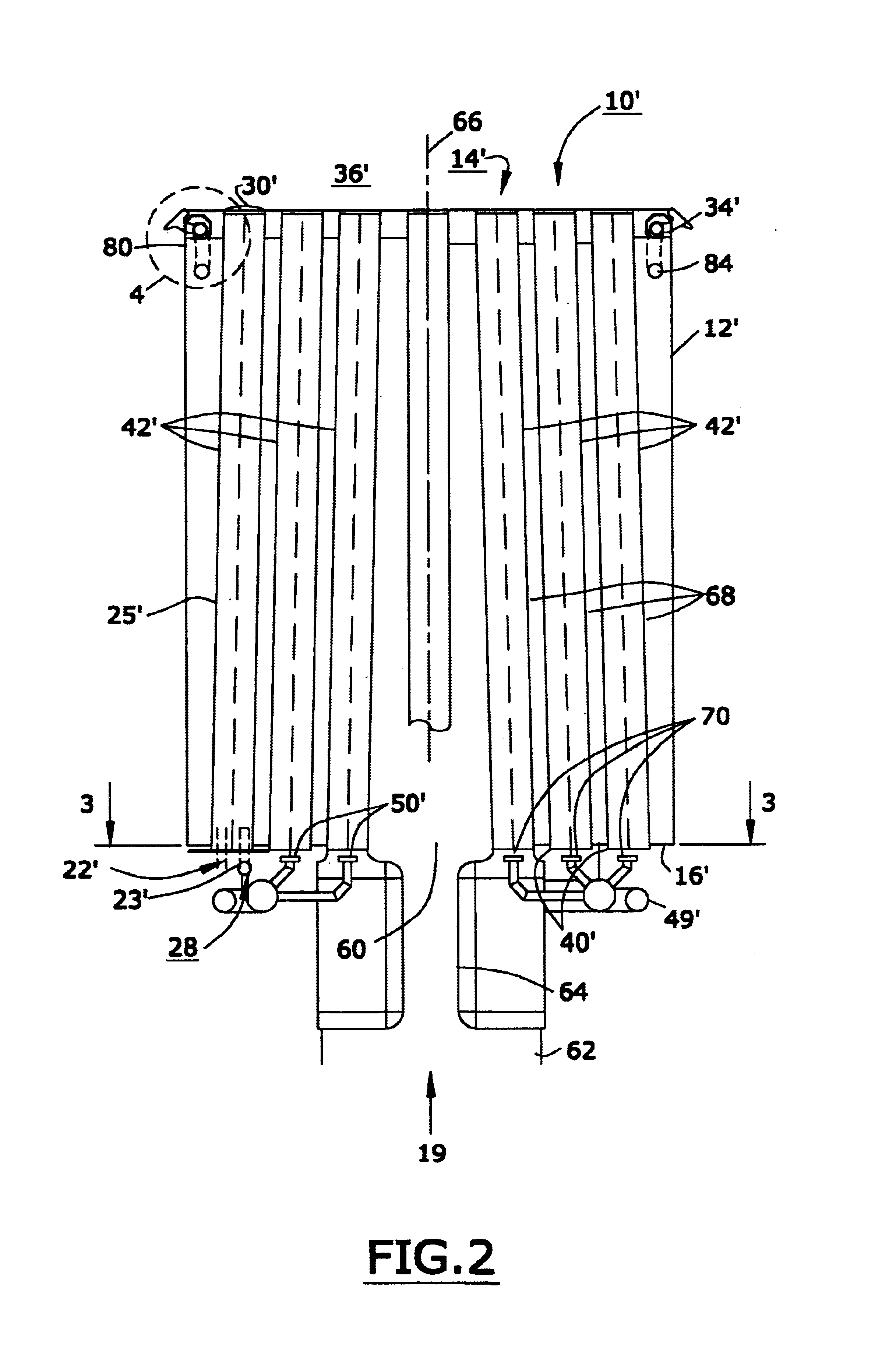Gas-assisted flare burner
a technology of gas-assisted flare burners and flare burners, which is applied in the direction of incinerator equipment, combustion types, lighting and heating equipment, etc., can solve the problems of manifold life, and achieve the effect of prolonging the life of the manifold and reducing the susceptibility of the flare burner
- Summary
- Abstract
- Description
- Claims
- Application Information
AI Technical Summary
Benefits of technology
Problems solved by technology
Method used
Image
Examples
Embodiment Construction
The improvements and benefits afforded by the invention may be better appreciated by first considering a prior art flare burner.
Referring to FIG. 1, a prior art flare burner assembly 10 includes a generally cylindrical shell 12 having an open upper end 14 and a lower end 16 adapted via a fitting 18 for connection to a source (not shown) of gas 19 to be burned, which gas enters shell 12 via fitting 18 during operation of burner 10. Surrounding shell 12 and welded thereto is a cage structure 20 for supporting shell 12 and providing means for mounting burner assembly 10 to a stack structure (not shown). Assembly 10 includes a pilot ignition sub-assembly 22 attached to shell 12 and cage structure 20 via brackets 24 welded to shell 12. Sub-assembly 22 is connectable via a fitting 26 to a source (not shown) of combustible gas 28 which may be the same as gas 19 or not. Pilot ignition sub-assembly 22 includes a gas valve 23, a pilot gas tube 25, and a pilot air tube 27, and has an exit tip ...
PUM
 Login to View More
Login to View More Abstract
Description
Claims
Application Information
 Login to View More
Login to View More - R&D
- Intellectual Property
- Life Sciences
- Materials
- Tech Scout
- Unparalleled Data Quality
- Higher Quality Content
- 60% Fewer Hallucinations
Browse by: Latest US Patents, China's latest patents, Technical Efficacy Thesaurus, Application Domain, Technology Topic, Popular Technical Reports.
© 2025 PatSnap. All rights reserved.Legal|Privacy policy|Modern Slavery Act Transparency Statement|Sitemap|About US| Contact US: help@patsnap.com



